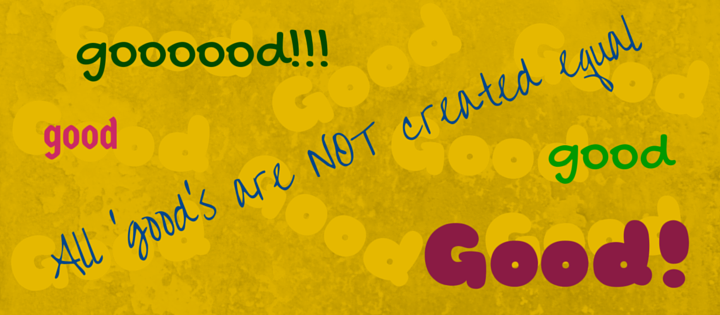By Joan Orr M.Sc.
Why Did She Get a Better “Good” Than Me?
There was a time, when we had much less experience than we have now, that we suggested to people that they might use the word “good” or another verbal marker to signal success to the learner. In practice this has turned out not to work as well as using a clicker or other non-verbal signal. We have used taggers with elite athletes, tiny tot ballerinas, commercial fishermen, kids with autism, kids with Down syndrome, business professionals, prison inmates and medical students to list a few examples. Using the tagger absolutely works and it works with every population of learner that we have encountered.
The verbal marker becomes very repetitive and annoying very quickly. It seems condescending in a way to say “good, good, good” over and over especially to another adult. It’s also very difficult to keep the tone of the “good” the same each time. People tend to want to convey additional information with the verbal marker. They tend to vary the tone and give a more expressive “good” if there is a particularly good effort. It’s hard to avoid the big excited “YES” when they finally get it, or the desultory “yes” when you’re tired, hungry and have a headache.
A teacher may inadvertently vary the tone of the “good” for different learners, and trust me – they notice! The learner wonders why they didn’t get the big “good!!” the next time or why another person got a bigger “good” than they did. Learners no matter how young can tell the difference between genuine praise and a rote “good job”.
The verbal marker inevitably mixes praise with information. This dilutes the power of using a marker. The marker must be the same every time and must convey only one piece of information “you got it right”. There are no degrees of “rightness”. It’s either tag or no tag (click or no click). This allows the learner to focus only the task at hand, the tag point, and not to have to process verbal information at the same time.
Praise is Great, but Not as a Precise Marker of Behavior
I’m not saying that praise is bad, or that there is no place for it. What I’m saying is that words can’t be used as markers as effectively as a neutral sound because words inevitably convey more than just the critical information (yes! you got it). The way to use praise effectively is in concert with the marker. Tag without talking and at the end of the tag session, give the verbal praise. For example, the learner might get 10 tags and then you end the session and say “You’re doing really well” or “you are hitting your tag point much better than yesterday” or “Fantastic!!!”
Our classic Highjump Video demonstrates this nicely. There is no talking other than to give the tag point, no feedback other than the tag and then the verbal, heartfelt praise at the end.
We have been trying to work out in our own minds the problem with the verbal marker and over time we have come to the conclusion that is the mixture of praise with information that is at the heart of the problem. Separate praise from information and you will get better results and more satisfied learners.
But I Just Can’t Use a Sound Marker
There may be times where it’s not appropriate or not possible to use a sound marker. You may have used the tagger for an intense teaching session and your learners are starting to fade. Not to worry! You can still use the principles of TAGteach in all your teaching. While you will not get the incredible power of TAGteach without using a tagger, you will still benefit from using the TAGteach principles. We call this Naked TAGteach (TAGteach without the tagger) and we have a webinar that explains this in detail. Click here for more information or to purchase.
Read this article for more about alternatives to the traditional clicker as a way to mark correct responses.
More About Verbal Markers and Why the “Tag/Click” Sound Works so Well
Read an article by Karen Pryor: Bingo! You Win!




Excellent points!